Best plants with winter berries: 15 plants for adding color
Add a splash of brilliant color by choosing the best plants with winter berries and give your garden a seasonal lift
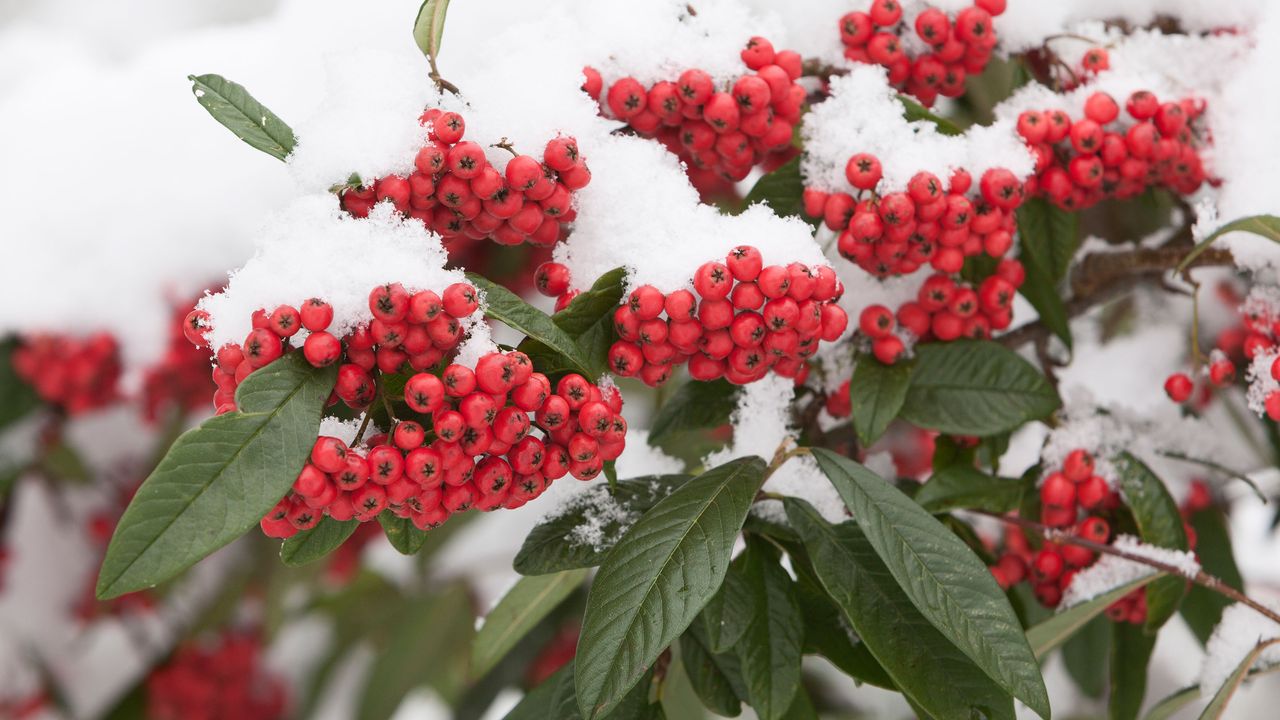

The best plants with winter berries come to the rescue of the winter garden adding pops of joyful color when it's most needed.
As the days get shorter a show of lustrous berries will add standout factor. Plant them near your front door for a welcoming pop of color when you come home or choose a spot in your backyard where you can see them from the house.
Go for traditional red or orange, or if you prefer a cooler color palette for your winter garden ideas, opt for creamy whites, purples or vibrant pinks for a very modern touch. All you need is a light dusting of frost and things will start to look really magical!
Go for plants with winter berries to give your plot a seasonal boost
There's no reason for your garden to lack interest during the colder months. By including plants with winter berries in your planting scheme, you can brighten even the gloomiest of days.
1. Callicarpa bodnieri
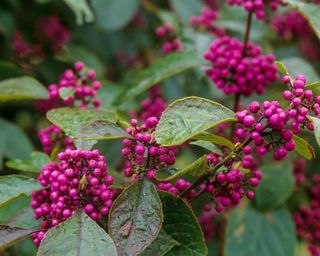
Also known as beautyberry, callicarpa puts on an astonishing show of berries in winter so this plant is aptly named. Their jewel-like color bring the garden alive, hanging in lush pinky-violet clusters long after the autumn leaves have fallen and lasting right through winter.
This shrub isn't fussy and does well in sun or partial shade, thriving in most soil types. Purple berried ‘Profusion’ is a widely available variety of callicarpa, while ‘Leucocarpa’ has creamy ivory berries if you prefer something that looks a little more subtle.
Try picking some berry-laden stems and arranging them in a vase to make the most of their stunning colors in the house.
2. Gaultheria procumbens
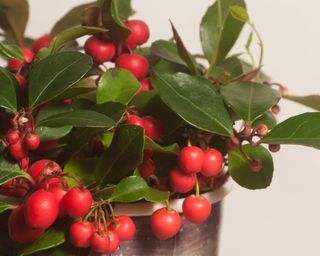
Best known for its eye-catching and long-lasting glossy berries, this evergreen bush adds a real pop of colour to winter landscaping. For a shot of red, you can’t beat it, and you can also get varieties with candied pink and white berries. It's one of the best plants with winter berries you can add to your garden.
It's also known as checkerberry, boxberry and American wintergreen. Grow Gaultheria procumbens in moist but well-drained soil in full sun to partial shade. It spreads easily but you can control it by slicing a spade through the roots.
It works well in a welcoming winter planter outside the front door, and the berries will really pop against a backdrop of evergreens. If you’re planting one in a pot remember to use an ericaceous compost as gaultheria is a member of the lime-hating heather family.
3. Euonymus europaeus (spindle tree)
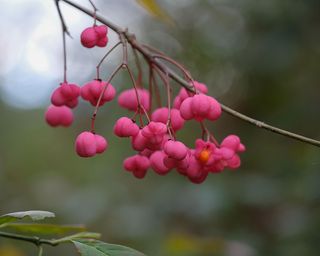
The wood of this large deciduous shrub was traditionally used for making spindles, which explains the name. It really comes into its own in winter, when covered in clusters of gorgeous, orange-pink berries which remain long after the blazing scarlet leaves have fallen. In cold weather the pods split open to reveal bright orange seeds.
Euonymus europaeus enjoys a position in full sun or partial shade, in any well-drained soil. It looks stunning in winter garden borders underplanted with early bulbs. Wildlife loves its leaves and fruit, especially robins, so it's one of the best plants with winter berries if you want to give a boost to biodiversity in your garden.
4. Holly
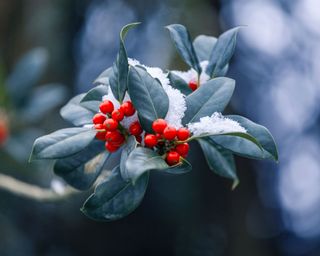
Tolerant of both sun and shade, hollies are a great addition to the garden at any time of year but especially in winter. Their glossy green foliage and eye-catching red berries are perfect for your Christmas wreath ideas, decking the halls with their jolly boughs and other seasonal decorations.
As well as bigger trees in the garden, they come as smaller versions you can plant in a pot and clip into an attractive lollipop shape. They look smart if you choose a pair of them to brighten up a front porch in winter, or add them to your winter patio ideas for a seasonal lift. Feel free to add fairy lights!
In the bleakness of winter, the holly tree is an ever reliable choice with its bright red berries.
5. Snowberry
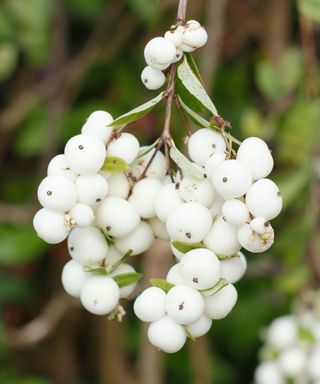
Symphoricarpos albus, to call it by its Latin name, is a deciduous shrub that produces pretty pink flowers and pearl white berries. Easy to grow and care for, it's a dense shrub that's fast growing and tolerant of whatever you throw at it including shady situations and poor soils.
Try underplanting it in a shady spot to add a luminous touch to the winter garden when the berries are at their glorious best. It will add a real focal point to an otherwise dull corner.
If you want to attract birds into your garden, they will flood into your space to feast on this plant's berries and they also like the shelter and security offered by its thicket-forming branches.
6. Aucuba japonica
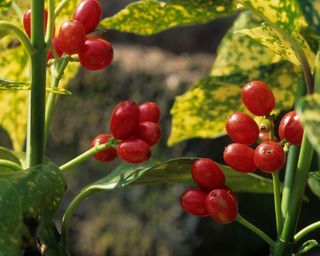
Also known as variegated Japanese laurel, this pretty plant will thrive anywhere in the garden including shady areas and is easy to look after too. With clusters of glossy bright red berries set in attractive speckled foliage, it makes an eye catching addition.
It really comes into its own when the leaves give off a light enhancing effect and the berries add a splash of brilliant scarlet that lifts even the gloomiest of days. It's a good choice for one of the best hedging plants as it will look good all year round.
There's just a bit of science to remember though. To get lush berries like these you will need a male variety of the shrub planted nearby too.
7. Viburnum
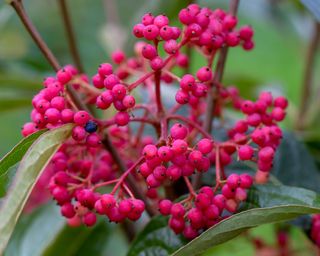
Viburnum is one of our favourite plants with winter berries as it's a shrub that keeps on giving, whatever the month. Its showy pink or white blossoms, luscious evergreen foliage and clusters of glossy berries will give your garden an elegant touch whatever the season.
The stunning metallic-hued berries ripen in autumn and last right through winter adding interest to the garden. Most types of viburnum come in shade of a dark blue-black purple color but they are also available in bright pink varieties that are more eye catching.
Birds love viburnum because it provides everything from a canopy for nest building to an abundance of glossy berries for them to feast on.
8. Mistletoe
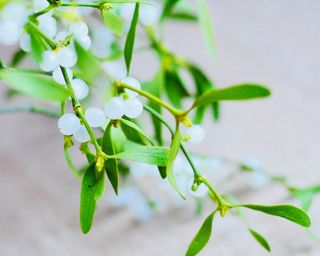
The luminous white berries of mistletoe plants are a magical addition to the garden in winter. It’s an evergreen that grows on a host tree such as apple, hawthorn, poplar, lime or conifer.
It's a must at Christmas of course, as bunches of it look so beautiful hanging up for decoration, especially as part of your plan for Christmas porch decor ideas.
With mystical powers thought to date back to the Druids, it’s supposed to bring good luck and ward off evil spirits. It’s easy enough to grow with a kit but you need to be patient as it will take a few years to get established. Or you can trying growing it from seed taken from your feelgood festive bunch this year.
9. Pyracantha coccinea
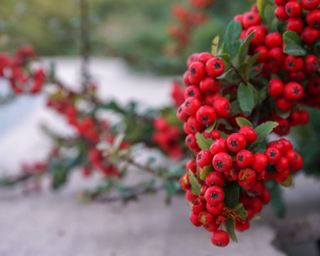
With its eye-catching displays of lustrous berries, pyracantha is a great shrub for training against a garden wall or fence, or growing as a hedge. There's a bonus in that its prickly leaves act as a burglar deterrent too.
Also known as firethorn, the brilliantly colorful autumn berries come in clusters of scarlet, orange or yellow. It's a good choice for wildlife gardens, especially if you want to attract pollinating insects and nesting birds, which feast on the berries that provide a good supply of food for them through the colder months.
This shrub is easy to grow in most soils and situations, making it a great choice for problem areas in the garden where not much else will grow.
10. Rose hips
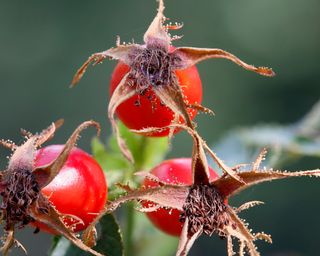
Brilliantly colored rose hips are one 'berry' that every winter garden needs and a good reason not to deadhead all your roses in summer. To get good rose hips, don’t deadhead everything or the plants can’t produce seeds. Leave some well alone and reap the dividends come winter.
As the weather becomes cooler, rosehips turn from green to deep shades of red and orange, and are a nutritious food source for wildlife. They look so beautiful too, adding color, structure and interest with their rich red-orange hues.
11. Hawthorn
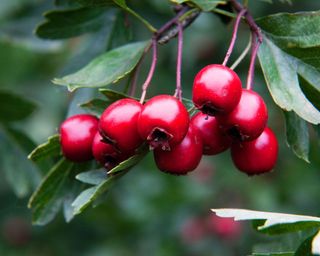
The glossy deep red berries of hawthorn (strictly speaking they're 'haws' not berries) are the darkest of winter plants with berries. In spring, it's covered in masses of flowers, then of course the berries are the star of the show in autumn and winter.
Hawthorns are ideal for all small gardens. The common hawthorn works well as a hedge, although the dwarf version is a great addition to borders. It can be grown in a large container too, so it's a good choice if you want to grow berries on the patio or in a small courtyard garden.
They grow in any soil, in sun or partial shade, and need little maintenance. Birds will hoover up the berries so they're a good choice to attract wildlife to your garden in addition to looking good.
12. Sorbus 'Pink Pagoda'
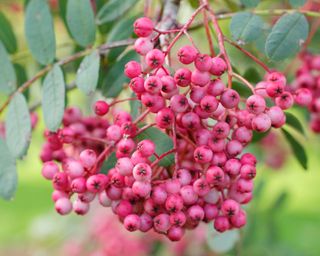
Sorbus 'Pink Pagoda' is one of the best trees for small gardens. It's easy to grow and the gorgeous pink berries are a delight in winter, following clusters of white flowers in spring then dramatic red leaves in autumn. It's the perfect tree for small gardens.
It's an easy care option too, requiring hardly any pruning. It will do best on well-drained, fertile soil and won't thrive in clay soils with poor drainage. It likes an open sunny site, but can handle some shade. The color of the berries will be best if grown in a sunny position though.
13. Rowan
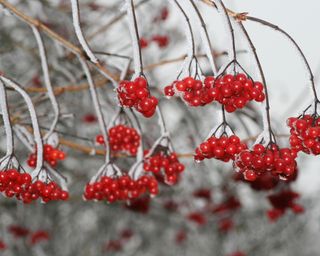
Rowans (other names include mountain ash and Sorbus aucuparia) are easy-to-grow trees that do best on well-drained, fertile soils, and don’t like clay or waterlogged conditions. They prefer an open sunny site, but can handle some shade and generally aren't that fussy.
These attractive ornamental trees are a fantastic choice for a small urban garden. They have a compact growing habit that suits courtyard gardens and patios well. Rowans are a magnet for birds and other wildlife too.
Their extended period of interest means they punch well above their weight. Their crowning glory is of course the clusters of gorgeous berries that dangle alluringly from their branches and give much-needed winter color.
14. Cotoneaster
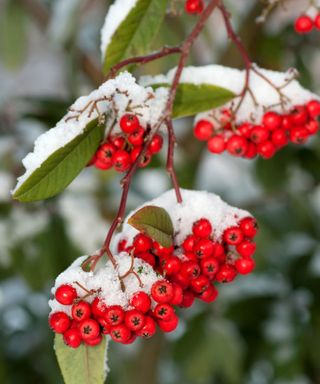
The voluptuous dark berries of cotoneaster stay on the shrub from fall right through winter, and come in shades of red, purple and black. In addition to the berries their clusters of flowers throughout summer are prolific and they have pretty fall foliage too. Some are evergreen which means they have a long season of interest.
In terms of size they range from ground cover plants with a spreading habit to hedging and small trees. Best planted in full sun and well-drained soil, they tolerate cooler and drier climates, but you'll need to think about how to protect plants from winter, so a sheltered spot is best.
They require very little attention once established, so they're top of the list for low maintenance gardeners looking for plants with winter berries.
15. Skimmia 'Humpty Dumpty'
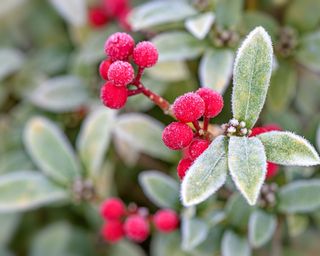
Skimmia are compact evergreen shrubs with small white or yellow flowers followed by attractive red berries on the female form of the plant. Most skimmia varieties are either male or female, so you need to grow two different varieties to ensure the females produce their bright red berries.
This low growing shade-tolerant shrub provides much needed winter blossom and scent, while the berries add little pops of color. It's good for edging borders and used as a ground cover plant, preferring a well drained soil that is reasonably fertile. Skimmia flourishes in full or partial shade.
It's one of the best low maintenance plants too. In terms of plant care, all you need to do is prune it lightly into shape after it finishes flowering and mulch occasionally.
Which plants have red berries in winter?
Holly is the classic choice for introducing red berries into your garden scheme, giving you pops of brilliant color through the cold season as well as providing foliage for your DIY Christmas decorations.
Other good varieties to pick from that also come in red include pyracantha, cotoneaster, skimmia and gaultheria.
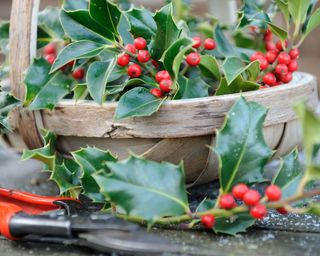
What shrub has black berries in the winter?
Some varieties of viburnum have dark purple-black berries. Blackthorn trees have dark plum-black berries that are better known as the sloes used to make gin, while juniper berries also have an inky dark black color.
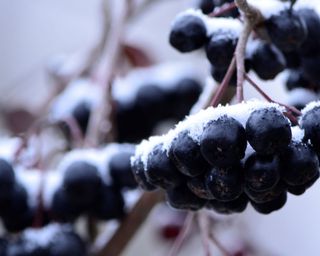
What berries do birds eat in winter?
Berries are an important food source for birds during winter, especially when the ground is frozen and there are few insects about.
Some birds, like song and mistle thrushes and blackbirds, find most of their winter food from berries, but it's also worth adding a couple of bird feeders to your garden to help boost their food supply too.
Some of the plants with winter berries that birds love include rowan, holly, spindle and ivy, as well as attractive shrubs like cotoneaster, pyracantha and berberis. All of these are good for a wide range of birds.

Lifestyle journalist Sarah Wilson has been writing about gardens since 2015. She's written for Gardeningetc.com, Livingetc, Homes & Gardens, Easy Gardens and Modern Gardens magazines. Having studied introductory garden and landscape design, she is currently putting the skills learned to good use in her own space where the dream is establishing a cutting garden.
-
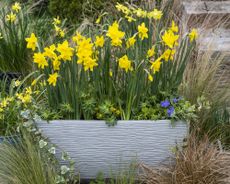 An Update on Gardeningetc
An Update on GardeningetcA word from our publisher
By Beth Murton Published
-
 Do you need to chit potatoes? Find out what the experts say
Do you need to chit potatoes? Find out what the experts sayGrow Your Own Learn how to chit potatoes before planting them in the ground and you’ll be on your way to getting an earlier and bigger harvest
By Drew Swainston Published
